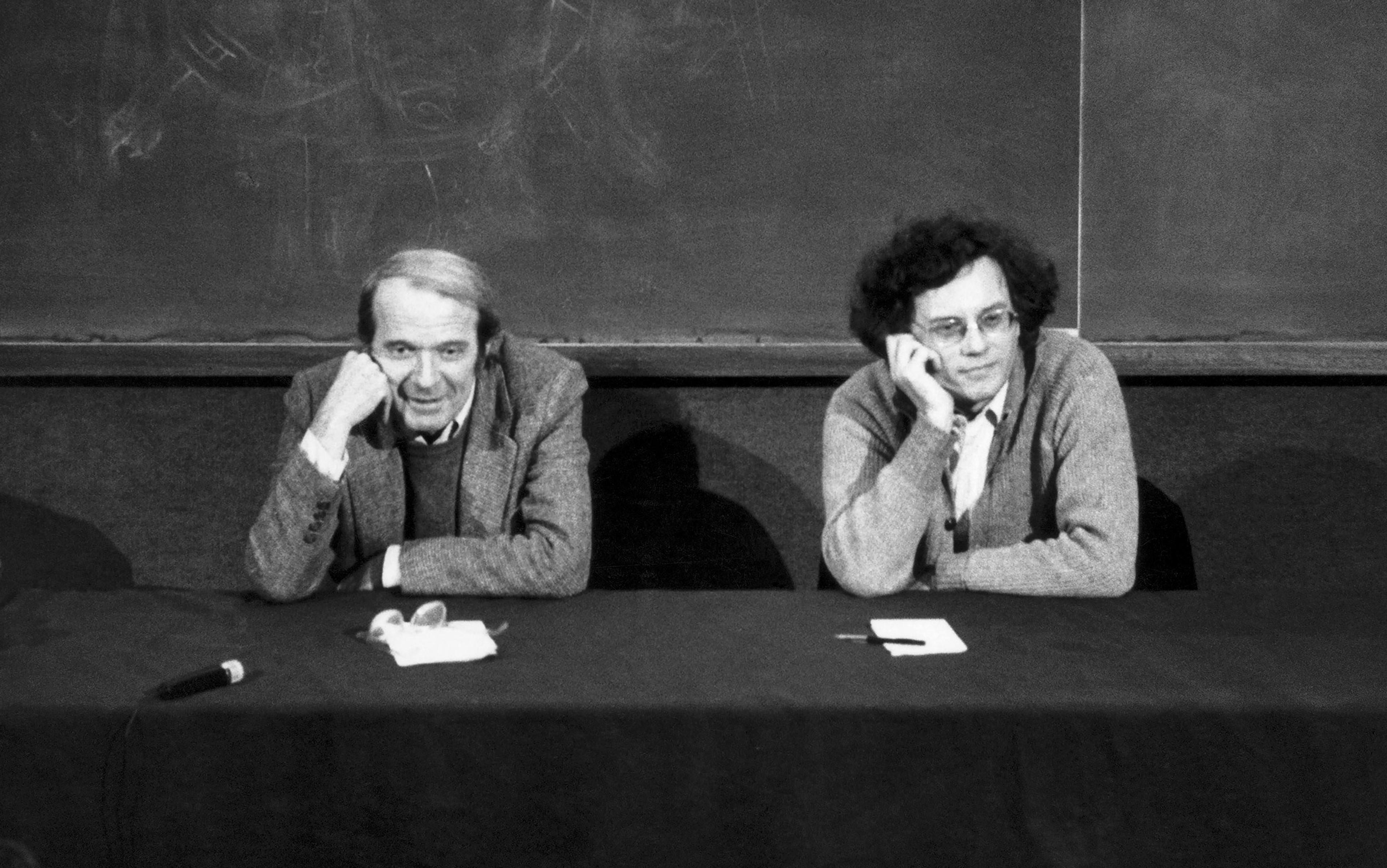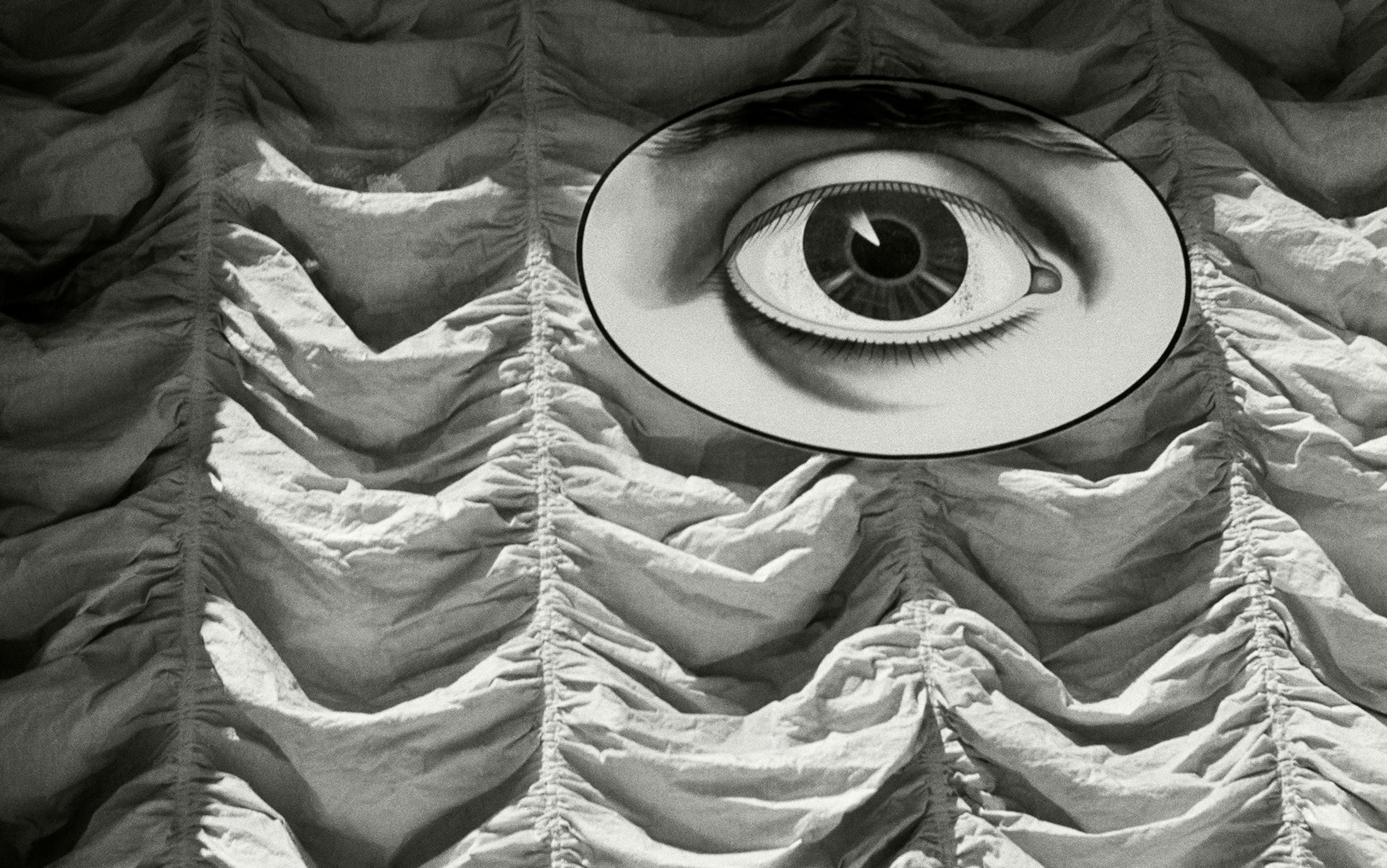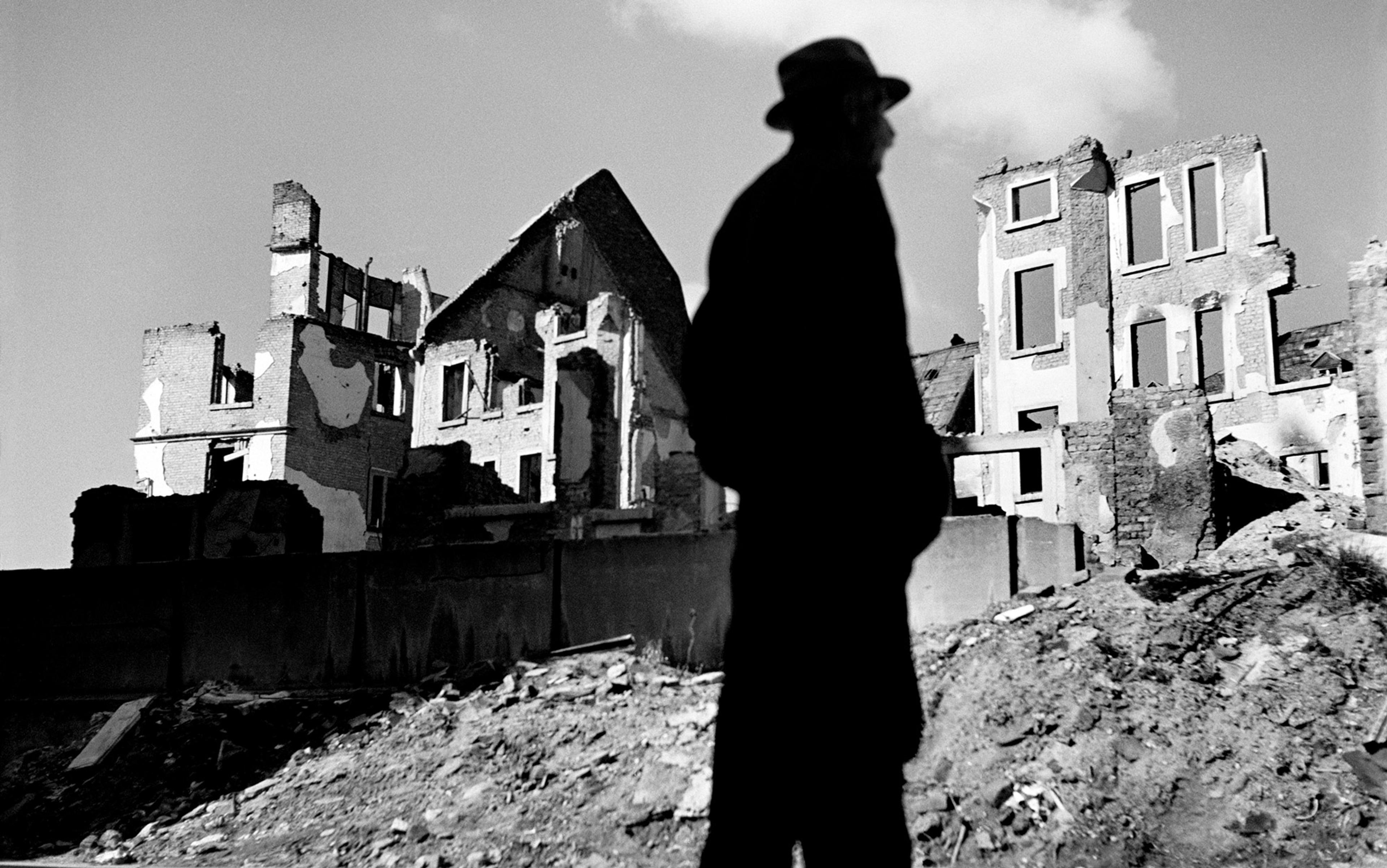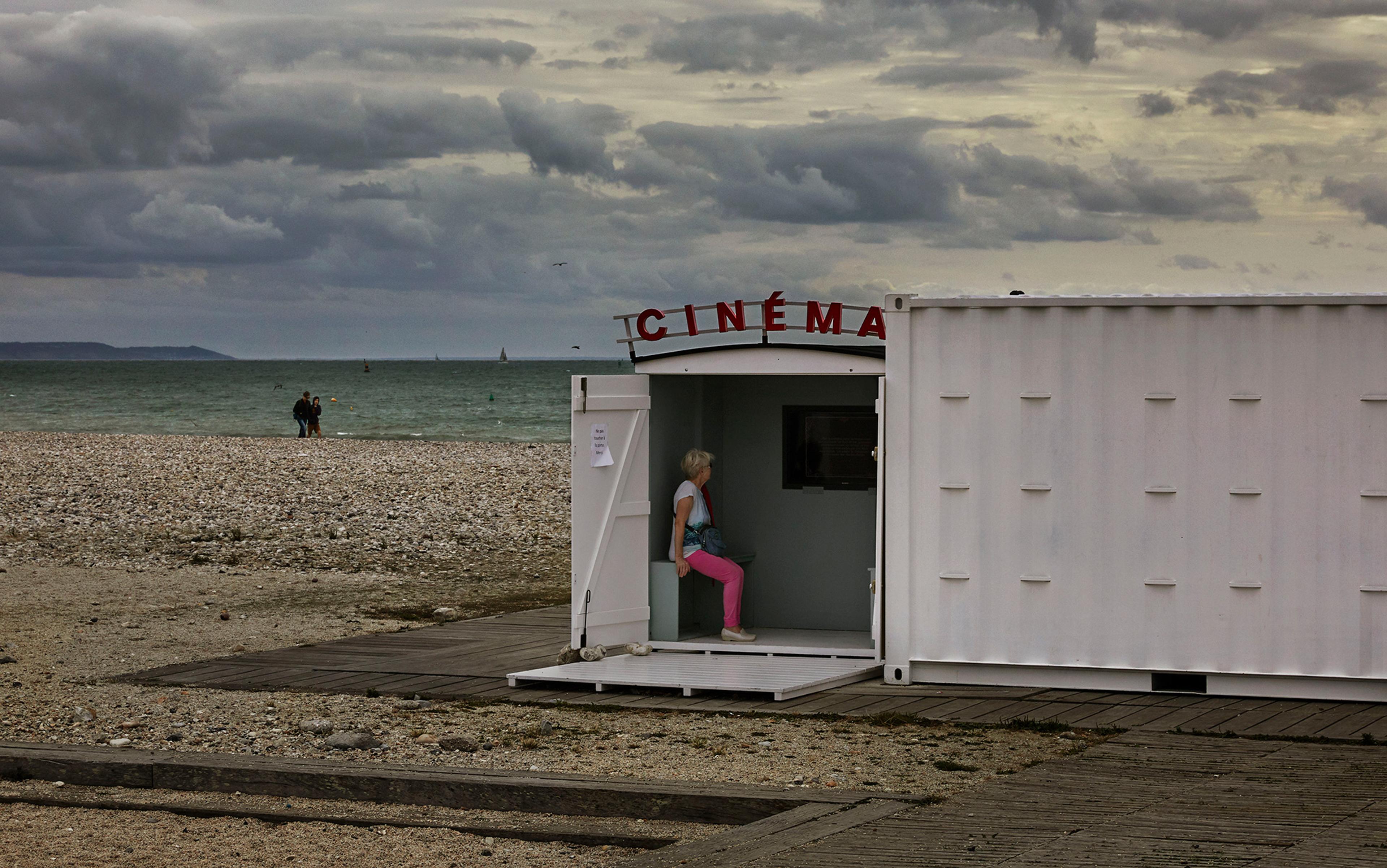In 1969, at the height of the French summer, a radical psychoanalyst went in search of a well-known philosopher. After driving three hours south to Limousin – a region in central France renowned for its forests and cattle-farms – the man found his quarry at home in bed, convalescing after surgery to remove a tubercular lung.
This was how Félix Guattari, the nervy, gregarious psychotherapist, met Gilles Deleuze, the reclusive professor. Their rapport was immediate. The pair would go on to become life-long friends, intellectual collaborators and authors of some of the most incendiary philosophical polemics of their day.
Before that first encounter, though, few could have predicted the powerful personal chemistry that existed between these men. At the age of 44, Deleuze must have seemed much older. Unwell and with difficulty breathing, he was reluctant to travel and comfortably settled in his post at the University of Lyon. Guattari, meanwhile, was a committed activist, who’d recently split from his previous mentor, the psychoanalyst Jacques Lacan, after refusing to toe the party line. He was now 39 and employed at La Borde, an unconventional psychiatric clinic in the Loire Valley, where his work on group fantasy had piqued Deleuze’s interest. But Guattari was also suffering from writer’s block; he hoped the philosopher might help him overcome it.
‘How could two such different men, with such distinct sensibilities and styles, pursue their intellectual agenda together for more than 20 years?’ asked Francois Dosse in his 2007 double biography. The answer to this question – and the secret to their alliance – was their mutual distrust of identity. Deleuze and Guattari were both resolutely anti-individualist: whether in the realm of politics, psychotherapy or philosophy, they strived to show that the individual was a deception, summoned up to obscure the nature of reality.
From their first collaboration, the pair would go on to develop various strands of anti-identitarian thinking, imagining a future in which the individual no longer reigns supreme. This ethos was evident not just in what they said, but how they said it – writing, editing and rewriting in a strange and unusually symbiotic dialogue. The duo worked in a fashion that presumed ‘a community of being, of thinking, and of reacting to the world’, as Dosse put it. Instead of pushing for historically subjugated identities to be reclaimed, Deleuze and Guattari tried to dissolve the distinctions that defined and delimited the individual subject itself. The result was a progressive, Marxist-inspired, anti-capitalist politics of joy – one that sits uncomfortably with some forms of identity politics prevalent today.
Guattari’s first exposure to the problem of the individual came from his early education in political organising. When the Second World War ended in 1945, Guattari was only 15; but he was already attending meetings of the French Communist Party and participating as a member of the Student Hostel movement, which had close ties to the French Resistance. He spent the rest of his adult life as a militant, constantly pushing at the fringes of established political programmes. He set up Trotskyist splinter groups and edited breakaway newspapers that challenged the Communist Party leadership.
The reason for Guattari’s perpetual agitation can be summed up with a single phrase: ‘the threat of Stalinism’. Guattari saw how the collective will of the Russian Revolution had collapsed into the hierarchical power structure of bureaucratic state communism. Now, he saw the same process occurring in miniature in every group he joined. No matter how communal the initial struggle, sooner or later the collective will dissolved into a competition between individual desires – with one person eventually emerging as the leader, at the expense of the others. Why do collaborations always collapse into hierarchies, he asked himself? Why does the group get atomised, rather than retaining a unified voice?
From 1953, Guattari also worked as a psychotherapist. Once again, he found that he couldn’t stand the discipline’s obsession with individuals. He completed his training with Lacan, one of the most influential psychoanalysts since Sigmund Freud – but rather than remain in private practice, Guattari plied his trade at a large public hospital, where he worked with institutionalised psychotic patients. La Borde was an experimental institution run along communist lines: doctors would help with manual labour, and patients and staff worked together to maintain the hospital. Here, Guattari began to believe that what made patients ill was not their particular pathology, but a form of social alienation – a problem made worse by the dehumanising activities of doctors, nurses and traditional medical systems.
There is no abstract idea of a ‘stone’, only multiple stones that are as different from one another as a bird from a tree
This view ran against the therapeutic mainstream. Traditionally, psychoanalytic techniques were designed for one-on-one conversations between an analyst and an analysand. Psychosis was therefore seen as basically untreatable, because those suffering from it couldn’t maintain the necessary contractual relationship with their analyst. To counter this problem, Guattari reformulated psychoanalytic methods for groups, trying to turn the whole hospital into an instrument of treatment. If psychosis is actually a form of alienation, he saw, then it can be fought only with sociability – which relies not on the formation of a strong sense of individuality, but on the ability of a group of people to work together.
As a political organiser and therapist, Guattari concentrated on fostering cooperation. At La Borde, his techniques included encouraging patients to participate in ‘therapeutic clubs’ for arts and theatre, where they could forge lasting relationships. When trying to give people the tools to reintegrate into society, Guattari said it was necessary to ‘build a new form of subjectivity that no longer relies on the individual.’ In the political arena, Guattari claimed that the ‘centralist disease of communist parties is due less to the ill intentions of their leaders than to the false relationships they establish with mass movements’. His problem was never a particular person – be they schizophrenic or Stalinist – but the process by which groups break up into discrete units, detached from one another, and from their own lives.
In the spring of 1968, far away from La Borde at first, a revolutionary fervour was sweeping across France. Students and factory workers staged demonstrations and instituted massive general strikes in response to the destructive forces of consumer capitalism. The uprising was spontaneous and not supported by either the established Leftist institutions of the workers’ unions, nor by the French Communist Party. Guattari was a central protagonist and organiser, but his mentor Lacan dismissed the demonstrations as mere hysteria. For Guattari, this was a moment of betrayal: if the Communist Party couldn’t recognise when a revolution was happening under its nose, and if Lacan refused to comprehend the force of collective desire when it was pouring through the streets, then something had to be done.
It was around this time that Guattari first encountered Deleuze’s work. Finally, he was convinced that he’d found an intellectual complement to his therapeutic and political aims. At this point, Deleuze’s scholarly output included studies of key Western philosophers, such as David Hume, Baruch Spinoza, Immanuel Kant and Friedrich Nietzsche. He had also written two more ‘original’ works, Difference and Repetition (1968) and The Logic of Sense (1969). Deleuze argued that the history of Western thought, at least since Plato, was in thrall to a number of illusions about the nature of thought itself. First, contrary to the assumptions of most philosophers, thought isn’t representational – which is to say, it doesn’t function by making pictures of the world, which can be judged as true or false depending on their degree of accuracy. By contrast, said Deleuze, thought is creative, and always connected to that which it thinks about.
Second, Deleuze claimed that because the canon of Western philosophy has judged thought on its ability to represent the world, it has taken sameness and accuracy to be paramount. Plato and Descartes provide two good examples. In his philosophy of forms, Plato said that any particular entity gains its qualities by reflecting its idealised, abstracted form. This form – which is identical only with respect to itself – is taken as the ground of knowledge. A man is a man only insofar as he represents his own ideal form; and to know what a man is, is to know the form of ‘man’. Similarly, Descartes’ ‘I think, therefore I am’ championed the centrality of identity and the individual. A person’s ability to know herself is what facilitates all further knowledge, the argument goes. In both cases, the basis of understanding arises from something unique, individuated and unchanging. In other words, the individual is the paradigm for truth.
Not so for Deleuze. He argued instead that thought is not grounded in identity; rather, it is generated out of difference. ‘Representation fails to capture the affirmed world of difference,’ he wrote – so we need to find a new way to think, a new way to philosophise, that does not take identity as its foundation. In fact, what appears to us in experience as an individual – be it a single stone or an individual person – gains its identity only as an effect of diverse forces that are in constant tension with one another. There is no such thing as an abstracted notion of a ‘stone’, only multiple stones that are arguably as different from one another as a bird is from a tree. The world is composed of differences, not individuals, even though representational thought can make it appear otherwise.
Spurred on by the events of May 1968, Guattari wrote ‘Machine and Structure’ (1971), an essay on Deleuze’s books. Here, he turned Deleuze’s arguments against Lacan, in an attempt to describe what was really happening in the streets. While Lacan had defined a set of structural rules, apparently determining the relationship between any individual and her object of desire, Guattari wanted to show that desire is a collective and productive force. Instead of Lacan’s commitment to the unconscious as a kind of theatre, where individual desires are staged, Guattari took up the idea that it was more like a machine or factory, constantly producing desire. Lacan recognised Guattari’s article as a threat to his authority, and tried to prevent its publication. Unperturbed by his master’s snub, Guattari sent the article directly to Deleuze – the catalyst for the fateful meeting.
The initial months of their friendship produced a wild array of original ideas. Deleuze suggested a strict routine for Guattari: he was to wake up and write first thing in the morning, mailing the drafts directly to Deleuze without any revisions or reconsiderations. ‘Deleuze said that Félix was the diamond miner and he was the polisher,’ said Arlette Donati, one of La Borde’s nurses. The collaboration mostly took place via correspondence, although the pair met every Tuesday afternoon at Deleuze’s house, to discuss and dissect the work.
The notes from these fevered first conversations formed the basis of their first book, Anti-Oedipus (1972). Here, Deleuze and Guattari set out to explain the relationship between desire and reality, connecting the pitfalls of psychoanalysis and philosophy with the current state of political affairs. They wanted to show how desire interacts with the material world, and to examine how it was entwined with politics.
In particular, the men wondered: why do revolutions fail? Why do people fight for their own servitude as if it was their freedom? Why do mass movements end up damaging the interests of the masses? Hitler and Mussolini had both come to power through populist movements. So, Deleuze and Guattari reasoned, to understand Fascism, we must explain why people desired Fascism. ‘Hitler got the Fascists sexually aroused. Flags, nations, armies, banks get a lot of people aroused,’ wrote Deleuze and Guattari in Anti-Oedipus.
Central to Deleuze and Guattari’s thesis is the claim that desire is not individual; desire runs through people, and drives people, but is not always aligned with simple self-interest. When you try to analyse the way that desire functions in large groups, one sees that it is neither unified nor easily divided. Desire, they said, is essentially ‘an affirmation that is irreducible to any sort of unity’. It can be understood only via what they called a ‘multiplicity’ – a multitude that can’t be sliced up into component entities.
But while desire is not necessarily aligned with the individual, capitalist society does its best to make all desire run by way of the individual. Freud was among the first to dissect desire – but his work looked at the maladies of his individual patients, and did not examine them through a properly historical lens. The neuroses that Freud diagnosed, and that continue to plague society in the 21st century, were not ahistorical pathologies. Rather, they were products of how capitalism had developed through time to constrain and order desire into a restrictive set of patterns.
Take the nuclear family – a historical construct that fashions people via a process of Oedipalisation, according to Deleuze and Guattari. Children are taught to direct their desire at a love-object, namely the mother, which is kept out of reach from them by a powerful law, embodied by the father. The result is the passive individual subject, who will turn up to work, obey the boss, compete with the neighbours, and consume an endless stream of commodities. Psychoanalysis plays the role of the police force of capitalism, tracking down psychological deviants and reforming them in the image of the good child and the good worker.
Enter the schizoanalyst, somewhere between a psychoanalyst and a political agitator
In one way, Anti-Oedipus can be read as a Freudian critique of Karl Marx. Marxist discourse had failed to account for moments of catalytic collective action because it did not understand the mechanics of desire – but perhaps it could be reinvigorated by introducing the Freudian concept of desire. However, the book simultaneously cut in the reverse direction, as a Marxist critique of Freud – aiming to rejuvenate psychoanalysis with Marx’s historical understanding of labour. The resulting Freudo-Marxism is a kind of psychoanalytic anthropology that the duo dubbed ‘schizoanalysis’: a narration of the history of desire, as a productive and impersonal world-creating force.
Enter the schizoanalyst, somewhere between a psychoanalyst and a political agitator. The role of this figure was to decode the unconscious processes of desire and identify their revolutionary potential. Deleuze and Guattari advocated a three-stage practice for bringing about political change through schizoanalysis. First, find those processes of desire that deviate from capitalism; then follow each to their most extreme conclusions, to allow them to escape from the restrictions of capital; and finally, align these different processes to create a ‘molecular revolution’.
What, exactly, does that mean? Deleuze and Guattari argued that it was impossible to know in advance what such a revolution would look like. Instead of fomenting one according to a pre-ordained plan, they proposed a politics of experimentation. The bodily ordeals of the French dramatist Antonin Artaud’s ‘theatre of cruelty’, and the drug-induced adventures of the American writer William S Burroughs, were two of Deleuze and Guattari’s favourite examples of how one might explore alternative organisations of desire.
The duo took a broad view of who might be involved in this enterprise. Rejecting the traditional Marxist idea that the working classes were the seedbed of change, the authors wanted a broader umbrella under which to unite all marginalised groups. They claimed that those oppressed by patriarchy (women), racism (people of colour) and heteronormativity (what we’d now call the LGBT community) were all suffering thanks to the same machinery of despotic and imperial capitalism. It’s only by bringing together these ‘minoritarians’ that an anti-capitalist revolution could succeed. Because the philosophical image of the individual is based on the apparently autonomous figure of the white male subject, it is through a process of ‘becoming-woman’, and of ‘becoming-minoritarian’, that the spectre of individuality can finally be banished.
Anti-Oedipus ruffled a lot of feathers. Lacan was furious, and forbade any discussion of the text in his seminars. Many political Leftists, while sympathetic to Deleuze and Guattari’s aims, admonished their recklessness and heterodoxy. Despite (or perhaps because of) these criticisms, the book was a runaway success, selling out in a matter of days and attracting a two-page review in Le Monde.
It wasn’t just the content, but also their form and working style that defied convention. Deleuze and Guattari’s books speak in a multitude of voices, not easily reduced to either of the two authors. ‘Since each of us was several, there was already quite a crowd,’ they say in A Thousand Plateaus (1980), the sequel to Anti-Oedipus. This sentiment was later echoed by Guattari: ‘We are very different … I’m more attracted to adventurous things; let’s call it a conceptual commando who likes to visit foreign lands. Gilles, on the other hand, is a philosophical heavyweight, he has a whole bibliographic administration.’
‘We didn’t collaborate like two different people. We were more like two streams coming together to make a third’
By working in this way, they tried to combat the tendency towards a sterile, deadening individuality, in a practical as well as a theoretical sense. A Thousand Plateaus contains 15 chapters that range over a dizzying variety of topics, from geology to linguistics, molecular biology to painting, poetry to political economy. Here, their critique of identity splinters into a thousand smaller appraisals. Instead of treating different fields of enquiry as cut off from one another, Deleuze and Guattari tried to show where one discipline seeps into another, challenging the centrality of any one of them. Ultimately, they aimed to open thought onto its outside, pushing against the tendency for theoretical work to close in on itself.
Anti-Oedipus and A Thousand Plateaus were not Deleuze and Guattari’s only collaborations, and each continued to work on their own projects. Deleuze also wrote extensively on the potential of cinema, and on the philosophies of Gottfried Leibniz and Michel Foucault, among others; Guattari argued for a new kind of ecological thinking that could explain the interactions between our psychic ecology, our political ecology, and the ecology of our planet. Their last collaboration took up the question of What is Philosophy? (1991). Sadly, Guattari died from a heart attack a year later, and Deleuze was too sick to attend the funeral. He was plagued by breathing problems, and too ill to work; in the end, he took his own life by jumping from his flat in Paris, three years after Guattari died.
‘We didn’t collaborate like two different people. We were more like two streams coming together to make a third stream, which I suppose was us,’ Deleuze had said. Or, as Guattari put it, there was ‘a true politics of dissent between us, not a cult but a culture of heterogeneity that makes each of us acknowledge and accept the other’s singularity’. The duo worked not by asserting their identities in conflict with one another, but by acknowledging themselves as a space in which differences could flourish. From the kernel of that initial meeting at Limousin, a multiplicity was born.






